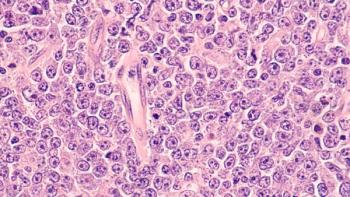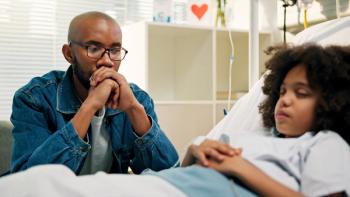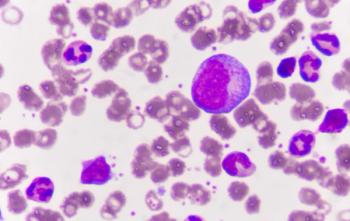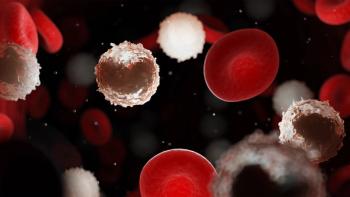
Self-Care at the Center of Mobile Lymphedema Prevention Program
Stressing self care, a Mei Fu developed an online platform for prevention and treatment of lymphedema.
Mei Fu, PhD, RN
Lymphedema is a common complication of breast cancer treatment, yet the current standard of care using compression sleeves does not offer long-term relief, leaving many patients feeling frustrated and helpless.
Mei Fu, PhD, RN, a professor and researcher at the Rory Meyers College of Nursing at New York University, has been working to change that paradigm with the development of the Optimal Lymph Flow program (TOLF) consisting of 3 online tools, accessible via any smartphone, tablet, or laptop, to assist patients with self-assessment, early diagnosis, and pain and symptom management.
Lymphedema affects as many as 40% of breast cancer survivors in the United States. Common symptoms include swelling, heaviness in the arm, pain, and impaired mobility in the arm, impacting quality of life.
TOLF collects demographic and clinical information related to the survivor’s treatment, features daily self-inventories of occurrence and distress of symptoms, and avatar videos of at-home lymphatic exercises for those who experience any of the 22 lymphedema-related symptoms, even if individuals do not have a diagnosis of lymphedema.
Fu and colleagues tested the TOLF program in a study involving 355 breast cancer survivors, and nearly all (96.6%) strongly agreed that the system was, “easy to use and effective in helping to learn about lymphedema, symptoms, and self-care strategies.” This finding aligns with results of an earlier pilot study, where all of the 20 participating patients reported that the TOLF system helped them to manage their pain and other symptoms.
Lymphedema After Breast Cancer: What Works
In an interview with Oncology Nursing News, Fu explained that the first step in creating the TOLF program was to identify the most effective strategies for treating lymphedema. The two her team identified are targeted lymphatic exercises to help the lymphatic fluid to flow and maintaining a healthy weight.
Fu said she has found that, “patients will not do something if it takes longer than 10 minutes, if they need to have any equipment, and if they have to go somewhere to be trained.” Keeping that in mind, she and her team developed 4 ½-minute daily lymphatic exercises. TOLF also offers strategies to help patients to maintain a healthy weight.
The earlier study also relied on nurse-taught interventions, but many patients requested video demonstrations of the exercises to watch at home. This suggestion was the catalyst for the mHealth platform which now houses videos of all the exercises with an avatar, Fu explained—“a simulation so the patients can see how the lymphatic system works.”
Emphasizing Lymphedema Patient Education and Self-Care
Overall, patients need to be better educated about this condition, said Fu. “Early symptoms actually occur before the measurable accumulation of fluid,” and interventions should begin before the current diagnostic standard (a swollen arm or fluid accumulation of greater than 8%) is reached.
To facilitate this early detection, Fu recommends that lymphedema risks, symptoms and treatment strategies should be explained in full, so patients can feel empowered and track symptoms on their own.
A key aspect of the system is self-care. The exercises are meant to be done daily. “If you go to the physical therapists, and to the doctors,” Fu pointed out, “that’s once in a while. That’s why daily self-care is so important to clear the fluid, and also for managing weight.”
With a self-administered program, adherence can pose another challenge. “Any of the self-care actions have to be less than 5 minutes,” Fu said. [“Patients] have to see something immediately—they will feel it right after they do the exercises.”
Treating Lymphedema in Head and Neck Cancer
Fu and her team have plans to expand the program to patients with head and neck cancers. “They have similar functional impairment as patients with breast cancer,” Fu said. “They also have the same symptoms.” Efforts are already under way in this area, with a pilot study and the addition of 2 exercises specifically for these patients. In addition, Fu stated there are researchers exploring the potential benefit of the exercises in treating heart failure and preventing opportunistic infections in elderly patients.
The digital era, to Fu, is the perfect time to optimize self-care. “With chronic illness and risk reduction and even treatment, it’s all about what our patients do during their daily lives. And if we, as healthcare providers, can empower patients, give them the skills, motivate them, let them understand why they have to incorporate this into their daily lives, we basically save a lot of healthcare costs.”
____________________________________________________________________
Fu MR, Axelrod D, Guth AA, et al. mHealth self-care interventions: managing symptoms following breast cancer treatment [published online July 22,2016]. Mhealth. doi: 10.21037/mhealth.2016.07.03.
Newsletter
Knowledge is power. Don’t miss the most recent breakthroughs in cancer care.
















































































